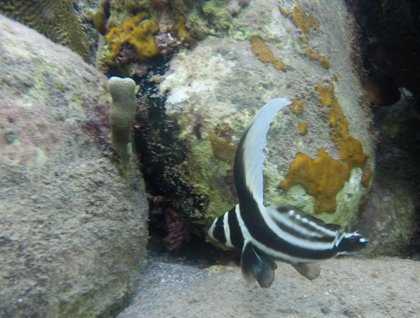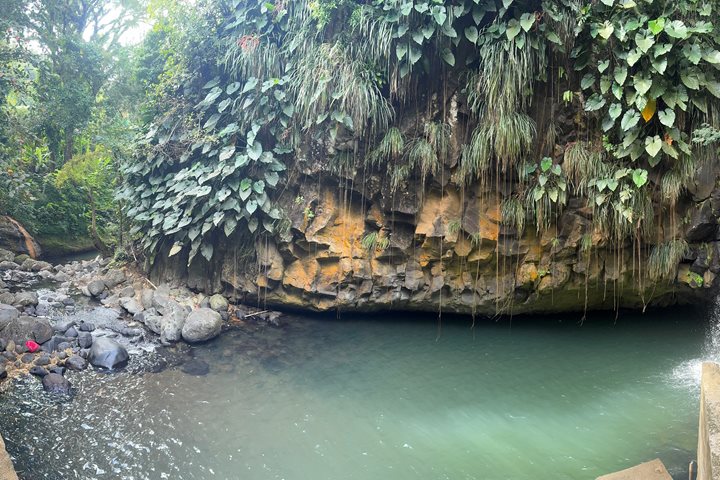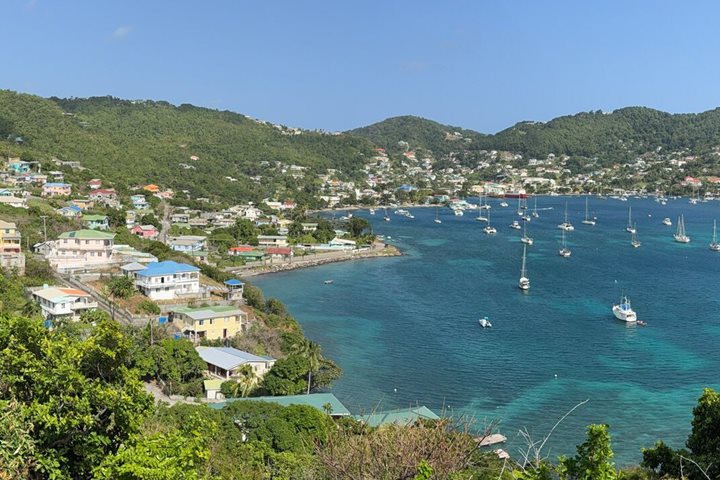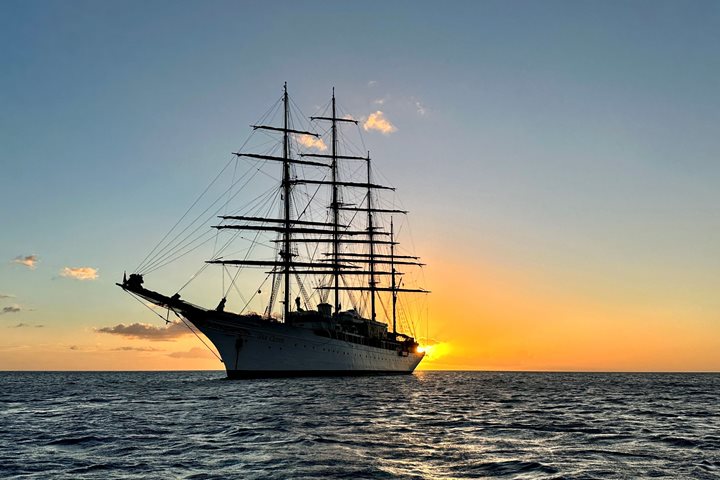The night seas were kind as we sailed to Dominica, rolling with a soft slow fetch, like the gentle rocking motion of a hammock. We came within sight of Dominica and Prince Rupert’s Bay at 6:30 a.m. and by 7:15 a.m. we were alongside Cabrits pier and docked. Prince Rupert’s Bay takes its name from the unfortunate King Charles I of England who lost his head by order of Cromwell in 1640. The name Cabrits is a variant of the Spanish for “goat.” The sailors who stopped here needed fresh meat and milk on their periodic stops and thus let goats run wild. On their return they had food and drink – 18th century refrigeration!
A fine, misting rain was falling, something I always expect on Dominica the “nature island.” The island in its wettest parts receives upwards of 300 inches of rain a year, about 25’ of rain a year. After breakfast, we boarded our vans for the exciting 45-minute ride to the rainforest atop Morne Diablotins. The mountain was shrouded in clouds, a strong wind was roaring through the trees. All of which added to the excitement of our walk through the rainforest. There we saw an endless variety of plants and trees. The names of the trees in the local patois are an education in themselves. I will remind you of just one -- the infamous “Bwa KaKa” whose wood is used for shingle roofing. The Kriol spelling of the French “bois” for wood is “bwa” and “kaka” identifies the rather noxious smell of the tree on cutting. The indigenous parrots had decided to stay in their nests because of the wind. We heard some of them calling but saw neither the Jacko nor the Siserou. On our return drive our guides recited poems and were filled with pride for their lovely island.
After our excursion to the rainforest and a scrumptious lunch, featuring the local specialty of fried flying fish, we visited the 18th century British Fort Shirley. I gave a brief overview of Cabrits Point and of Fort Shirley. The fort was begun in 1774, finally completed by 1820, and built entirely by local slaves. The fort is massive and spreads across most of the 200 acres of the Cabrits’ headland. It has only been possible to recover a small part of the original. Strangler vines and jungle cover the rest of the compound. The fort never saw action and existed principally as a deterrent. It was designed by the 18th century American architect Harrison to protect the Royal Navy at anchor in Prince Rupert Bay. The fort’s canons could sweep the entire area in front of the town of Portsmouth. There was another battery across the bay and the two batteries made the bay inviolate. At its zenith the fort had 700 enlisted men and a contingent of the 8th West Indian Regiment made up of slaves. The French forces under Admiral DeBouille took Dominica in September of 1778 only to loose it again in the Treat of Paris of 1783. The Fort was abandoned in 1852 and lay derelict and in ruin covered by strangler figs and the jungle until a good friend of mine, Dr. Lennox Honeychurch, a native of Dominica, undertook restoration beginning in 1982. Lennox is still working on the restoration and has accomplished miracles.
The sea from the shoreline out one thousand feet is part of the Cabrits National Park and the fish are not hunted. Thus the reef is in excellent condition and abounds with enormous barrel sponges, some so large that you could swim inside them. Many of us joined naturalist Mike Greenfelder for snorkeling. I saw tangs, grunts, damselfish, parrotfish, and wrasses and probably a lot more. Once aboard we were greeted with afternoon tea.
Dinner this evening was on the Lido Deck. After dinner our National Geographic lecturer Alexandra Cousteau – the granddaughter of the pioneering marine explorer, Jacques Cousteau – told us about the legacy of her family. Such days as today do not come along often and we all slept with that deep sense of satisfaction for the events of the day.









